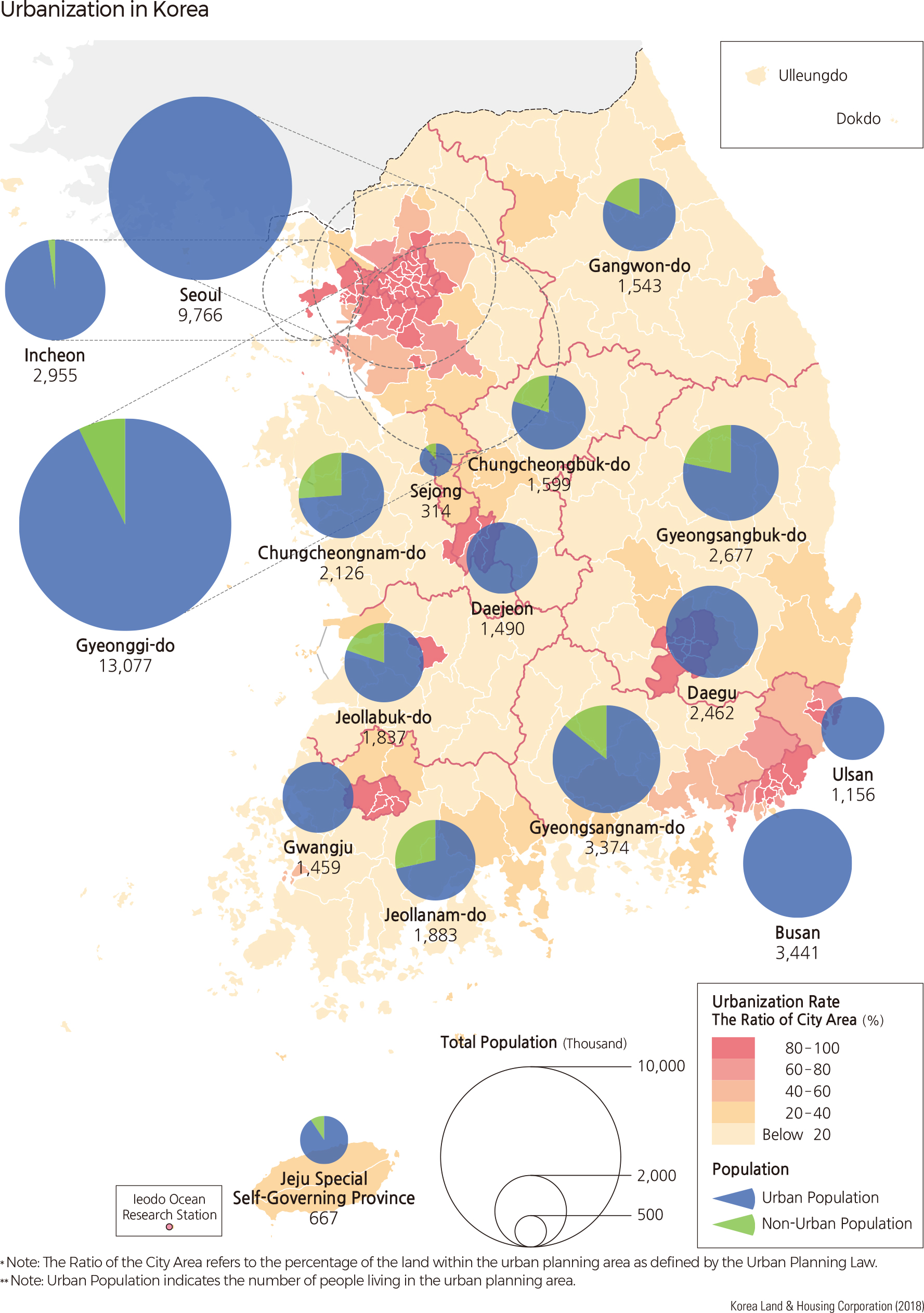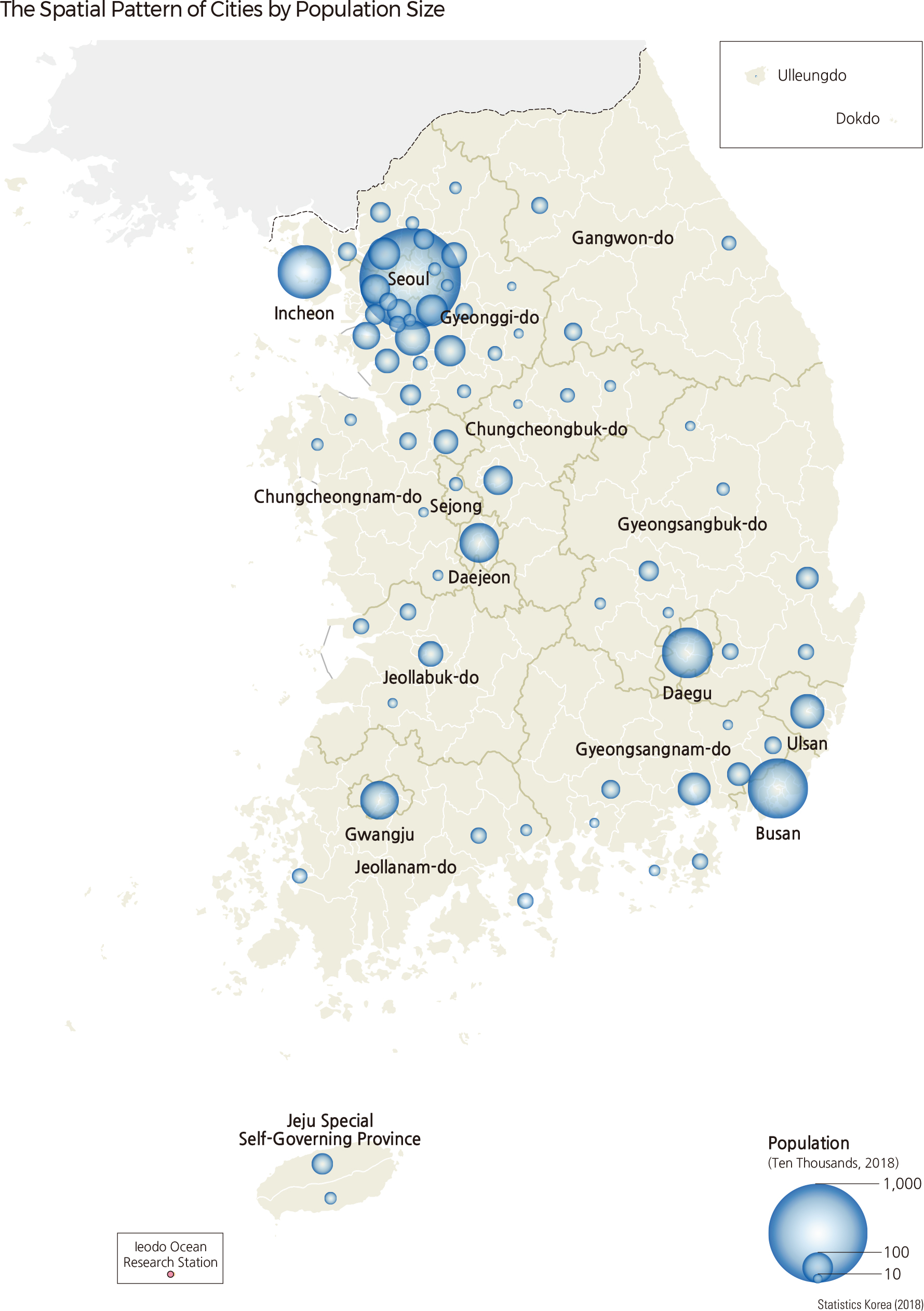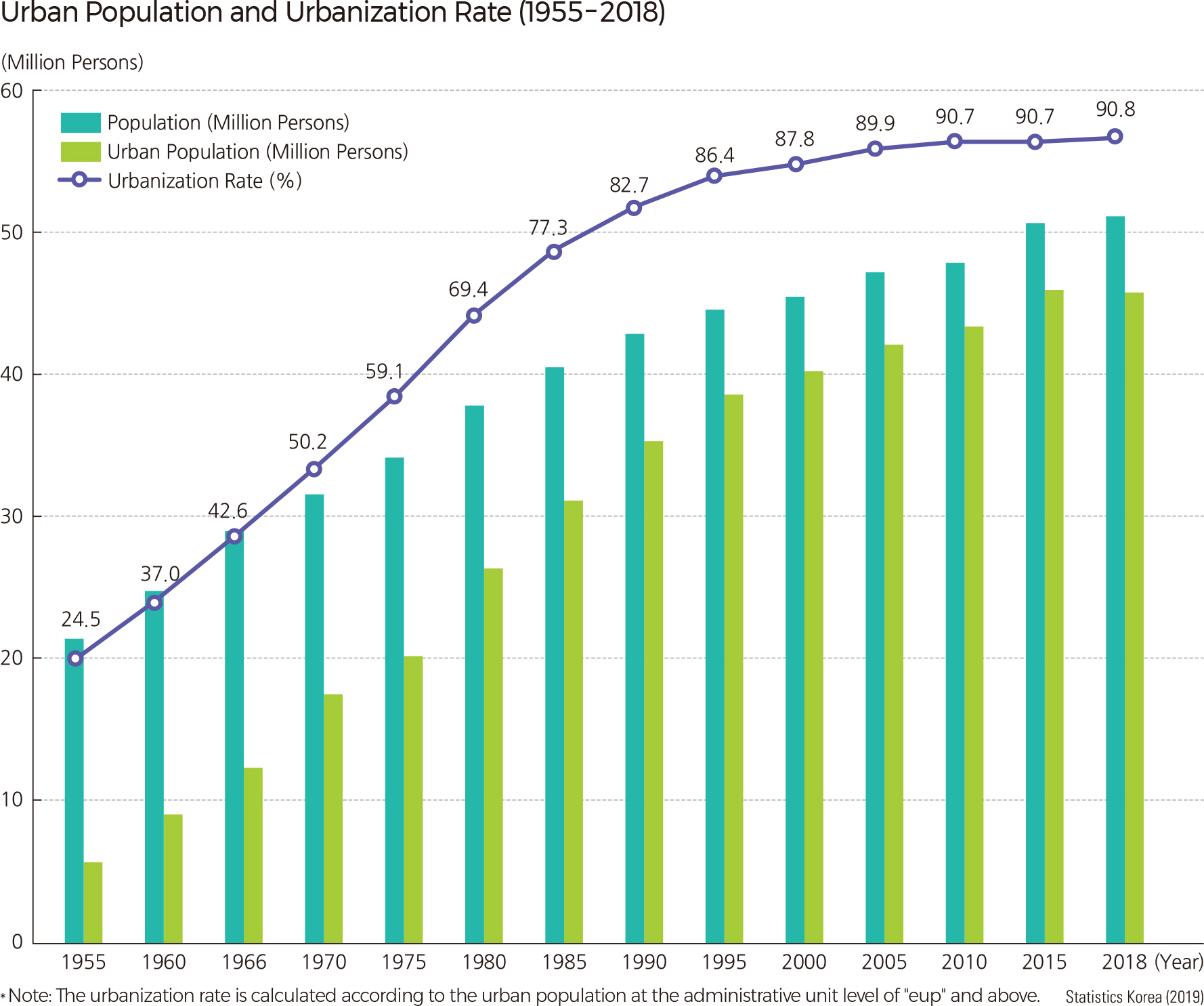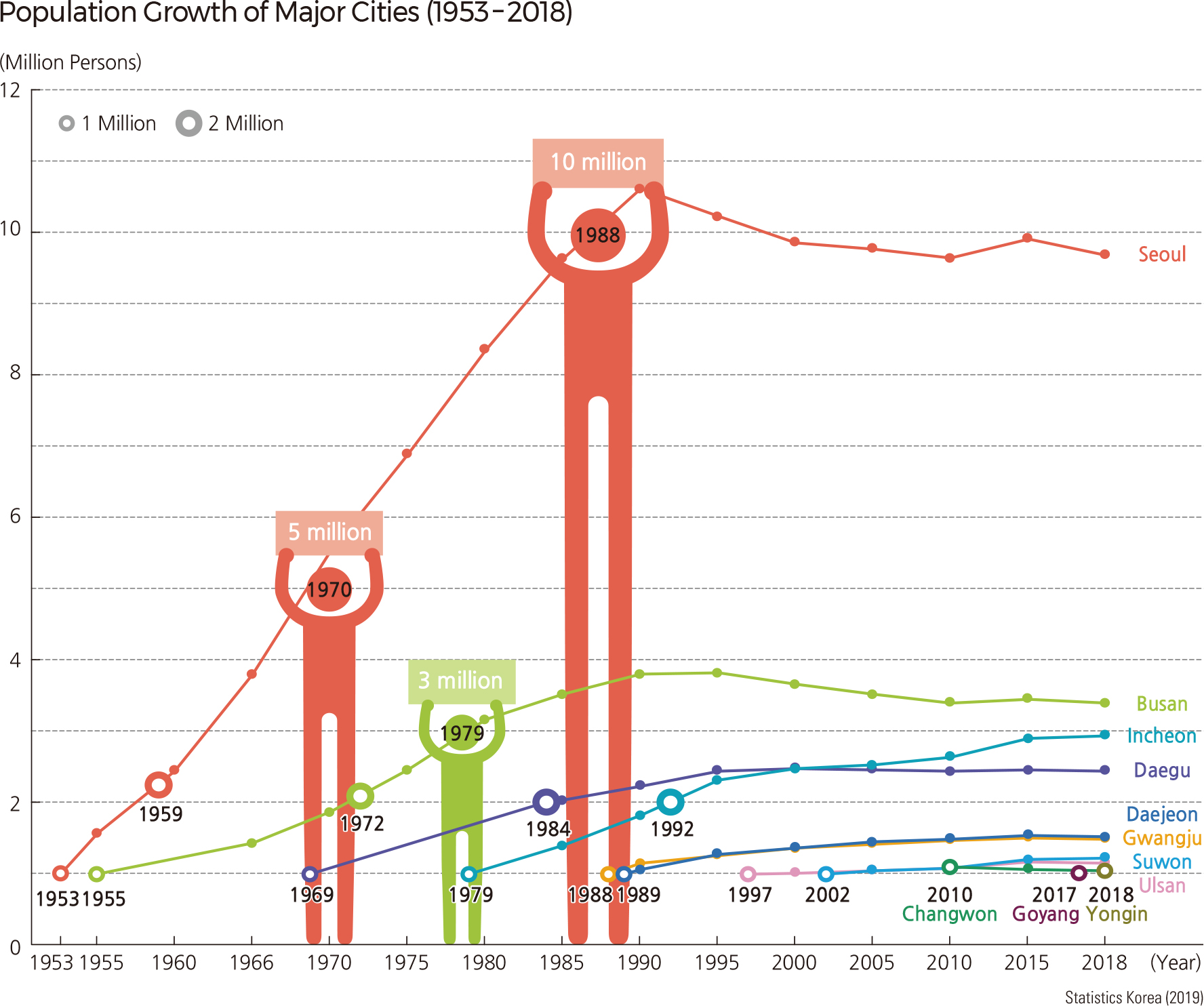English I 2019
The most notable change in Korea's landscape over the past 60 years is increasing urbanization. The representative indicator of this process is the urbanization rate that shows the share of people living in urban areas out of the total national population. This statistical number can differ depending on which administrative unit is used to designate an area as urban or rural. In the case that the administrative unit level of the Dong and Eup above are considered as urban areas, Korea’s urbanization rate has exceeded 90%. The rate of increase was rapid until the 1980s, but it has since slowed down. This slowing trend indicates that Korea’s urbanization has entered its final phase. The capital area surrounding Seoul, Busan and its surrounding area, and other metropolitan cities all show high urbanization rates.
The list indicating urban growth in Korea when each city reached 1 million residents is as follows: Seoul (1953), Busan (1955), Daegu (1969), Incheon (1979), Gwangju (1988), Daejeon (1989), and Ulsan (1997). As for cites that did not meet the metropolitan definition, Suwon-si exceeded 1 million in 2002, Changwon-si in 2010, Goyang-si in 2017, and Yongin-si in 2018. Seoul exceeded 10 million in 1988 and became a megacity even by international standards. Busan, the second-largest city, exceeded 3 million in 1979; however, its population stagnated and has decreased recently. The distribution of cities by population size shows a clear trend toward port city development along the southeastern coastal industrial zone as well as the expansion of the greater capital area. These two urban centers, in particular, gave rise to the Gyeongbu Axis.
Urban migration, the nuclearization of families, the increase in national income, and widespread expectations for a higher quality of life all led to soaring demands for housing in the 1980s and 1990s. The housing supply kept pace with demand. The housing supply rate exceeded 100% by the year 2000. The increase in housing was also a result of many housing-related development policies, such as the Modern Housing Construction Project, the Two Million Housing Construction Project, the Rental Housing Construction Project, and the New Town Development Project. In rural areas, the Saemaeul Project and the Rural Living Environment Program were also implemented.
Traditionally, the dominant housing type was single-detached dwellings; however, these have been outnumbered by apartments, thus increasing the apartment residence rate significantly. The single-detached dwelling ratio was 87.5% in 1980, which dropped to 22.4% by 2018. During the same period, the apartment ratio has increased from 7.0% to 61.4%. The supply of apartments varies by region, and the trend shows that the supply is mainly concentrated in the capital and metropolitan areas rather than in nonmetropolitan areas. |




